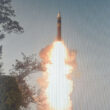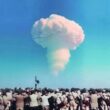Nuclear decisions, long-lasting consequences
By Eugene Miasnikov, February 6, 2015
In Round Two, Matthew Kroenig wrote that "the United States is debating modernization, but Russia is completing it." It’s unclear what my colleague means. Does Kroenig believe that Russia’s nuclear arsenal is qualitatively superior to that of the United States? Such a belief has no basis in fact. If there was rough nuclear parity between the two nations at the end of the Cold War, Russia could not have outrun the United States in the intervening years. Development of military technology in Russia has been quite modest over the last two decades. The new Russian strategic missiles and submarines deployed over that time have mostly been based on technologies already developed by the late 1980s. And a simple comparison of US and Russian expenditures on nuclear maintenance and modernization undermines the notion that Russia could have outstripped the United States.
If Kroenig’s rationale for US nuclear modernization is not that the US arsenal is inferior, is he suggesting instead that the United States should dominate the world both in terms of conventional and nuclear capabilities? Lu Yin was entirely correct when she argued in Round Two that nations undermine global security when they seek absolute security for themselves. Kroenig seemingly seeks absolute security for the United States, and thus walks a path that leads toward global conflict instead of global peace.
Kroenig makes another suspect claim when he writes that "…in defiance of its promises at the end of the Cold War, Russia retains thousands of battlefield nuclear weapons, ready for use." This claim is simply incorrect. Russia has successfully completed most of the implementation work related to the Presidential Nuclear Initiatives of the early 1990s, according to which the two sides pledged to reduce their arsenals of tactical nuclear weapons. Today, all Russian nonstrategic nuclear weapons are housed at central storage sites operated by the 12th Main Directorate of the Ministry of Defense. They are not deployed with delivery vehicles. They are not ready for use—unlike, for example, many intercontinental ballistic missiles on both sides, which are kept on alert and can be launched within a few minutes.
Russia has never promised to get rid of its nonstrategic nuclear weapons unconditionally. Still, in the late 1980s and early 1990s, Russia withdrew all nuclear weapons based within the territory of former allies in Eastern Europe and countries of the former Soviet Union. But when Moscow withdrew its forces from these regions, it did not expect that the West would seek to extend its military alliance closer to Russia’s borders. Meanwhile, the United States continues to base tactical nuclear weapons in Europe. This represents a major obstacle to progress on the problem of nonstrategic nuclear weapons. In any event, there is a general consensus in the arms control community that the United States and Russia possess comparable numbers of nuclear warheads. Counting strategic and nonstrategic warheads, whether deployed or nondeployed—but not including warheads awaiting dismantlement—each side has about 4,000 to 5,000 warheads. Focusing too much on nonstrategic warheads obscures this quantitative parity.
Also bearing further examination is Kroenig’s assertion that Russia has, by testing a new missile, violated the Intermediate-Range Nuclear Forces Treaty (INF Treaty). One needs to exercise care in drawing such conclusions; publicly available evidence suggests that the issue is not so cut and dried. Indeed, both sides have raised compliance issues concerning the treaty. If the United States and Russia both believe that the treaty remains important, they should reconvene the Special Verification Commission, the group specifically established for resolving compliance issues. Continuing to make public accusations is not going to save the treaty.
Finally, regarding the situation in and around Ukraine, the crisis there certainly represents a major stumbling block to mutually beneficial US-Russia cooperation. But Kroenig takes too simplistic a view (and an incorrect one) when he writes that "Russia has violently occupied Crimea and invaded the Donbas region of eastern Ukraine." The issues surrounding the crisis extend far beyond the scope of this roundtable. Still, one point is worth making: The situation in Ukraine today is a tragic consequence of decisions taken long ago—in particular, creating artificial dividing lines where none existed before.
It is up to the American people to decide on the future size of their nuclear arsenal, and how much modernization it requires. But it is important to bear in mind that such decisions will have profound effects on the rest of the world. These decisions might promote, to borrow Kroenig’s words, a "reduction in tensions among all states," which would be conducive to further nuclear cuts. Or they might become a source of additional tension and mistrust.
Topics: Nuclear Weapons
Share: [addthis tool="addthis_inline_share_toolbox"]














